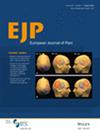Four MBE Therapies to Improve Pain Scores, Physical Functioning, and Quality of Life in Patients With Chronic Nonspecific Low Back Pain: Network Meta-Analysis of Randomised Controlled Trials
Abstract
Background
Chronic nonspecific low back pain (CNSLBP) is a common musculoskeletal disorder that severely affects patients' quality of life and work capacity. Due to its complex aetiology and lack of clear pathological markers, conventional treatments often provide limited relief. Mind–body exercises (MBEs), including Tai Chi (TC), Qigong (QG), Daoyin, and Yoga, have gained attention for their dual physical and psychological benefits. This study evaluates these four MBEs to determine their efficacy in managing CNSLBP.
Methods
A systematic search of seven databases (PubMed, Embase, Web of Science, Cochrane, EBSCO, CNKI, WANFANG) identified 29 randomised controlled trials (RCTs) involving 3803 CNSLBP patients. Outcomes included pain scores (PS), physical functioning (PF), and quality of life (QOL). A network meta-analysis was conducted using Stata 17.0 to compare intervention effectiveness and assess direct/indirect evidence consistency.
Results
The results of the network meta-analysis showed that in terms of pain scores (PS), Qigong (QG, SUCRA = 79.5%, SMD = −3.08) had the best effect; in terms of physical functioning (PF), Qigong (SUCRA = 86.5%, SMD = −4.94) remained the best intervention; whereas, in terms of quality of life (QOL), Tai Chi (TC, SUCRA = 94.3%, SMD = 13.15) had the most significant effect. Qigong was superior in terms of pain and functional improvement, while Tai Chi performed optimally in terms of quality-of-life improvement.
Conclusion
QG is the most effective for pain relief and improving physical function, while TC best enhances QoL. Different MBEs have distinct effects on functional outcomes, suggesting that interventions should be tailored to individual patient needs. Combining multiple approaches may optimise results for CNSLBP management.
Significance Statement
This study highlights the efficacy of mind–body exercises (Qigong, Yoga, Tai Chi) in improving pain, function, and quality of life for chronic low back pain. Qigong and Yoga excel in pain relief, while Tai Chi enhances well-being. By integrating physical movement with mental focus, these low-intensity, adaptable therapies offer a holistic, non-pharmacological approach, emphasising personalised care for long-term management.

 求助内容:
求助内容: 应助结果提醒方式:
应助结果提醒方式:


